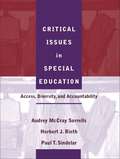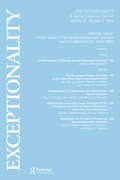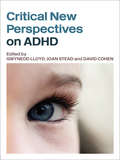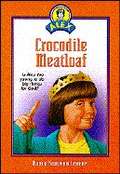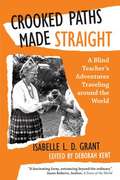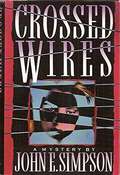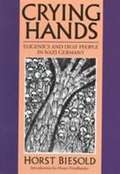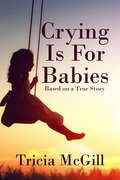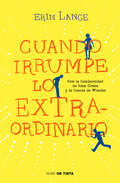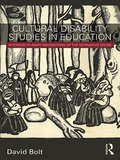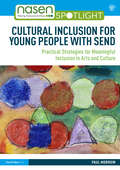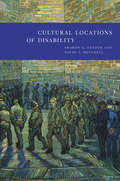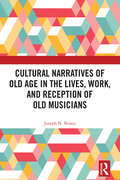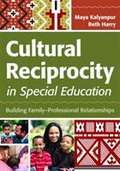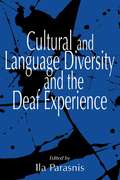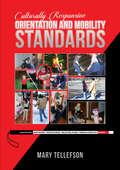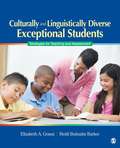- Table View
- List View
Critical Issues in Special Education: Access, Diversity, and Accountability
by Audrey Mccray Sorrells Herbert J. Rieth Paul T. SindelarThis textbook provides synopses of current issues deemed critical in the field of special education as outlined by the most prolific authors.
Critical Issues in Training Special Education Teachers: A Special Issue of exceptionality
by Laurie U. DeBettencourtFirst Published in 2005. Routledge is an imprint of Taylor & Francis, an informa company.
Critical New Perspectives on ADHD
by Gwynedd LloydExperts from all over the world take a critical, highly international and often controversial perspective on the ADHD phenomenon – a condition that has reached global proportions, significantly affecting the lives of children, parents and teachers worldwide. This book raises a number of concerns often not covered by the material currently available to parents and practitioners. Critical New Perspectives on ADHD unpicks the myths surrounding the development of this phenomenon and leaves no stone unturned in its search for answers. An in-depth exploration into the reasons for the emergence and maintenance of ADHD lead to suggested explanations of the dominance of US psychiatric models and the need for new markets for major pharmaceutical companies, as well as the functions that ADHD diagnoses fulfil in families, classrooms and communities. In a world where moves to educational inclusion are paradoxically paralleled by the ever-increasing use of medication to control children’s behaviour, this book scrutinises current accepted practice and offers alternative perspectives and strategies for teachers and other education professionals. This in an invaluable resource for anyone with a serious interest in ADHD and other behavioural difficulties.
Crocodile Meatloaf
by Nancy Simpson LeveneAs she becomes friends with Rachel, a deaf girl who has joined her sixth-grade class, Alex begins to feel that God has given her a mission to protect Rachel from the boy who is tormenting her.
Crocodiles Can't Climb Trees: Targeting the k Sound (Speech Bubbles 1)
by Melissa PalmerLucas the Monkey loves to play soccer by the river, but he has a problem – Mr. Crocodile, who would love to make Lucas his dinner. This picture book targets the /k/ sound, and is part of Speech Bubbles 1, a series of picture books that target specific speech sounds within the story. The series can be used for children receiving speech therapy, for children who have a speech sound delay/disorder, or simply as an activity for children’s speech sound development and/or phonological awareness. They are ideal for use by parents, teachers or caregivers. Bright pictures and a fun story create an engaging activity perfect for sound awareness. Please see other titles in the series for stories targeting other speech sounds.
Crooked Paths Made Straight: A Blind Teacher's Adventures Traveling Around The World
by Deborah Kent Isabelle L. D. Grant<P>In 1959, two years before she retired from teaching, Dr. Isabelle Grant set off on a yearlong journey around the world with Oscar, her long white cane, in her hand. She had been totally blind for the past twelve years. <P>In Crooked Paths Made Straight, she shares the story of her journey during which she visited twenty-three countries from Great Britain to Fiji. In Karachi, she traveled the streets by rickshaw and struggled to master the Urdu language. In India, she explored the Taj Mahal, and in Burma she slept in a room where lizards raced up and down the walls. <P>At a time when both women and blind people were generally seen as too helpless for solo travel, Grant fearlessly defied conventions. A dedicated teacher with a lifelong commitment to learning, her mission was to learn all she could about education in the countries she visited, in particular the education provided to blind children. <P>Completed in 1965, Crooked Paths Made Straight recounts Grant's journey, a story of dreams deferred that did not shrivel but sprang to life again and again.
Cross-Cultural Psychotherapy: Toward a Critical Understanding of Diverse Clients
by Charles NegyTable of Contents Part I: Conceptual and Practical Considerations for Effective Therapy 1. Treating Dissimilar Clients: No Longer the Road Less Traveled 1 Charles Negy 2. Competencies for Providing Services to Dissimilar Clients 23 Anthony F Greene 3. Cross-Cultural Assessment: Conceptual Framework and Guiding 35 Principles Lisa A. P. Sanchez-Johnsen and Israel Cuellar 4. Religious Bigotry in Multicultural Psychology and Therapy 61 Charles Negy and Christopher J. Ferguson Part II: Racial and Ethnic Populations 5. Introduction to Hispanic Americans and Latinos/as 77 Miguel Angel Cano and Flor Vanessa Perez 6. Mexican American Psychology: Theory and Clinical Application 85 Linda G. Castillo and Miguel A. Cano 7. Psychological Issues with Puerto Ricans: A Review of Research Findings 103 Consuelo Arbona and Baisilisa Virella 8. Immigration History and Therapy Considerations with Hispanics from Cuba, Central and South America 133 Edward Anthony Delgado-Romero, Angela Rojas-Vilches, and Kimber L. Shelton 9. African American Clients: History and Therapy Considerations 161 Nique Fajors and Charles Negy 10. Caucasian (White) Americans: The Forging of an Identity and Culture 187 Christopher Aaron Myers, Dawna Cricket Martita Meehan, and Charles Negy 11. Assessment and Psychotherapy with Asian Americans 207 Eddie Yu-Wai Chiu 12. Cultural Bereavement and Sense of Coherence: Implications for Psychotherapy with Southeast Asian Refugees 237 Eddie Yu-Wai Chiu 13. Psychotherapy with Asian Indian Immigrants: Evolving Issues 251 and Concerns Vidyulata Kamath, Benjamin A. Orooji, and Christopher J. Ferguson 14. Multiracial/ethnic Clients: History, Models, and Treatment Implications 269 Charles Negy, Jenny L Klein, and Eva D. C. Brantley 15. Therapy with Native American Clients 289 Charles Negy 16. Mental Health Counseling with Arab Americans 309 Christopher J. Ferguson PART III: Other Culturally Diverse Populations 17. Feminist Therapies: Working with Diverse Women 327 Shelley M. Park 18. Affirmative Counseling and Psychotherapy with Lesbian, Gay, Bisexual, and Transgender Clients 363 Dean M. Amadio and Ruperto M. Perez 19. Working with Disabilities: Client, Therapist, Treatment, and Family Variables 401 Cliff McKinney 20. Older Adults: The Emerging Population for the 21st Century 413 Andrea Dixon Rayle
Crossed Wires
by John E. Simpson<P>Crossed Wires, a highly original mystery novel, introduces readers to an unusual heroine, who is being stalked by a particularly chilling serial killer. Finley is tenacious, sympathetic, and attractive. What then makes her an unusual sleuth? Finley is deaf. And Finley and the murderer who hunts her inhabit, literally, a new world -almost a new dimension. They live an important part of their lives within the electronic bulletin boards accessed by their personal computers. <P>Finley, whose hearing impairment makes her vulnerable, has learned to live and rely upon faceless friends, especially Tracy and Jane, she knows only through her modem. She works as a researcher at CIAC, the National Crime Information and Analysis Center in New Brunswick, New Jersey, a very sophisticated clearing house for law enforcement agencies. Even without romance, life is pretty good for Finley, with a challenging job as an electronic detective and an apparently reliable set of friends, until one beautiful fall morning the ebullient Tracy is murdered - her throat slashed and her computer's memory wiped clean.
Cry Rape: The True Story of One Woman's Harrowing Quest for Justice
by Bill LuedersCry Rape dramatically exposes the criminal justice system’s capacity for error as it recounts one woman’s courageous battle in the face of adversity. In September 1997, a visually impaired woman named Patty was raped by an intruder in her home in Madison, Wisconsin. The rookie detective assigned to her case came to doubt Patty’s account and focused the investigation on her. Under pressure, he got her to recant, then had her charged with falsely reporting a crime. The charges were eventually dropped, but Patty continued to demand justice, filing complaints and a federal lawsuit against the police. All were rebuffed. But later, as the result of her perseverance, a startling discovery was made. Even then, Patty’s ordeal was far from over. Other books have dealt with how police and prosecutors bend and break the law in their zeal to prevail. This one focuses instead on how the gravest injustice can be committed with the best of intentions, and how one woman’s bravery and persistence finally triumphed.
Crying Hands: Eugenics and Deaf People in Nazi Germany
by Horst Biesold Williams SayersExposes the active collusion with the Nazis of various physicians, administrators, and teachers of the deaf who embraced the Third Reich's eugenics policies. Documents the collusion of deaf leaders, who tried to incorporate all independent deaf groups into one Nazi organization while expelling deaf Jews, and traces resistance against the Third Reich by deaf Germans. Includes personal accounts of some of the 1,215 deaf victims of enforced sterilization, demonstrating the lasting physical and emotional pain of Nazi violations. The author is a retired professor and teacher of deaf students.
Crying is for Babies: Based on a True Story
by Tricia McGillIn the 1930s medicine was still very much a hit and miss affair. The surgeons were still experimenting and learning about the human body. This at a period when there was little in the way of pain relief. This is one woman’s story about a childhood ruined by such surgeons, whose bad judgement confined an eight-year-old subsequently to bed for three years and left her with a disability to last a lifetime. Nowadays she would have been given bed rest and pain relief, and in no time would have been up and running again. Her strong will, and the love of a close family, saw her through the bad times, enabling her to go on and become the talented, remarkable person she was. I know because this woman was my sister.
Crystal Puzzle: Growing Up with a Sister with Asperger's
by Ashley NanceA delightful and true story of growing up with a sister with Asperger's Syndrome, The Crystal Puzzle chronicles powerful family experiences from the realization that there was something different about her sister through the hopes and joys and challenges of school to the eventual independence that comes with growing apart as one sister moves on and out of the home. Blogger Ashley Nance offers an accurate, humorous, touching, and poignant glimpse into the lives of those affected by Asperger's and learning disabilities.Crystal Puzzle also includes a helpful resource section for families interested in additional information to help them cope and succeed given the challenges that come with Asperger's and other learning disabilities.
Cuando irrumpe lo extraordinario
by Erin LangeUna conmovedora y luminosa novela sobre la poco probable y, aun así, inquebrantable amistad entre un matón de instituto y un chico con síndrome de Down Una adivinanza no tiene sentido la primera vez que la oyes. La amistad entre Dane y Billy D. tampoco: ¿qué tienen en común el matón del instituto y un chico con síndrome de Down? En el caso de Billy y Dane, tienen un mismo problema: Dane no sabe quién es su padre, y Billy está decidido a reencontrarse con el suyo. Su amistad puede llevarlos a descubrir la verdad... ¿pero qué descubrirán sobre sí mismos? Enternecedora y lúcida, Cuando irrumpe lo extraordinario es una inolvidable historia sobre las segundas oportunidades, la amistad y el amor: una celebración de las personas y sucesos impensados que dan un vuelco a nuestras vidas. La crítica ha dicho... «La historia de dos personajes imperfectos y memorables.» Booklist «Dane no es unhéroe ni Billy D. una víctima inocente: Lange es demasiado buena como para eso. Ambos chicos son personas de carne y hueso con la capacidad de divertir, encandilar y enfurecer al lector, cuyas emociones oscilan deliciosamente entre la adoración y las ganas de chocarles la cabeza de uno contra la del otro de pura exasperación.» The Guardian
Cultivating diversity and inclusion: using global and multicultural children's literature in grades K-5, Second Edition
by Paula Saine"Cultivating Diversity and Inclusion: Using Global and Multicultural Children's Literature in Grades K-5 offers children's books from across the world that engages students with cultural language experiences and provides ways to incorporate apps and social media activities in the classroom"--Provided by publisher.
Cultural Disability Studies in Education: Interdisciplinary Navigations of the Normative Divide (Routledge Advances in Disability Studies)
by David BoltOver the last few decades disability studies has emerged not only as a discipline in itself but also as a catalyst for cultural disability studies and Disability Studies in Education. In this book the three areas become united in a new field that recognises education as a discourse between tutors and students who explore representations of disability on the levels of everything from academic disciplines and knowledge to language and theory; from received understandings and social attitudes to narrative and characterisation. Moving from late nineteenth to early twenty-first-century representations, this book combines disability studies with aesthetics, film studies, Holocaust studies, gender studies, happiness studies, popular music studies, humour studies, and media studies. In so doing it encourages discussion around representations of disability in drama, novels, films, autobiography, short stories, music videos, sitcoms, and advertising campaigns. Discussions are underpinned by the tripartite model of disability and so disrupt one-dimensional representations. Cultural Disability Studies in Education encourages educators and students to engage with disability as an isolating, hurtful, and joyful experience that merits multiple levels of representation and offers true potential for a non-normative social aesthetic. It will be required reading for all scholars and students of disability studies, cultural disability studies, Disability Studies in Education, sociology, and cultural studies.
Cultural Inclusion for Young People with SEND: Practical Strategies for Meaningful Inclusion in Arts and Culture (nasen spotlight)
by Paul MorrowThis practical book offers a multifaceted view of cultural inclusion from the perspective of special educational needs and disabilities (SEND). It provides a road map for teachers to ensure increased participation in arts and culture for children and young people with SEND, defining a series of characteristics for good practice. Chapters explore spaces as diverse as galleries, museums, theatres and performance venues and include a variety of case studies, highlighting the experiences of young people and the organisations who partner with schools. Cultural Inclusion for Young People with SEND offers a compelling call to action and is an essential resource for those who have the power to improve and support the development of future provision for children with SEND.
Cultural Locations of Disability
by David T. Mitchell Sharon L. SnyderIn Cultural Locations of Disability, Sharon L. Snyder and David T. Mitchell trace how disabled people came to be viewed as biologically deviant. The eugenics era pioneered techniques that managed "defectives" through the application of therapies, invasive case histories, and acute surveillance techniques, turning disabled persons into subjects for a readily available research pool. In its pursuit of normalization, eugenics implemented disability regulations that included charity systems, marriage laws, sterilization, institutionalization, and even extermination. Enacted in enclosed disability locations, these practices ultimately resulted in expectations of segregation from the mainstream, leaving today's disability politics to focus on reintegration, visibility, inclusion, and the right of meaningful public participation. Snyder and Mitchell reveal cracks in the social production of human variation as aberrancy. From our modern obsessions with tidiness and cleanliness to our desire to attain perfect bodies, notions of disabilities as examples of human insufficiency proliferate. These disability practices infuse more general modes of social obedience at work today. Consequently, this important study explains how disabled people are instrumental to charting the passage from a disciplinary society to one based upon regulation of the self.
Cultural Narratives of Old Age in the Lives, Work, and Reception of Old Musicians
by Joseph StrausOperating largely within the world of European-American classical music, this book discusses the creative work of old musicians—composers, performers, listeners, and scholars—and how those forms of music- making are received and understood. Like everything else about old age, music-making is usually understood as a decline from a former height, a deficiency with respect to a youthful standard. Against this ageist mythology, this book argues that composing oldly, performing oldly, and listening oldly are distinctive and valuable ways of making music—a difference, not a deficit; to be celebrated, not ignored or condemned.Instead of the usual biomedical or gerontological understanding of old age, with its focus on bodily, cognitive, and sensory decline, this book follows Age Studies in seeing old age through a cultural lens, as something created and understood in culture. This book seeks to identify the ways that old musicians (composers, performers, listeners, and scholars) accept, resist, adapt, and transform the cultural scripts for the performance of old age. Musicking oldly (making music in old age) often represents an attempt to rewrite ageist cultural scripts and to find ways of flourishing musically in a largely hostile landscape.
Cultural Reciprocity in Special Education: Building Family-Professional Relationships
by Maya Kalyanpur Beth HarryTo succeed in increasingly diverse classrooms, tomorrow's special educators need explicit training on working effectively with all families. Prepare the next generation of teachers with this accessible text, developed by two highly respected experts on cultural and linguistic diversity and inclusive education. Ideal for use as a supplementary textbook in a wide range of courses related to special education, this book gives educators a practical framework for cultural reciprocity a process that helps professionals and families examine their own values, respect each other's differences, and collaborate skillfully to benefit children. <p><p> To give special educators a deeper, more nuanced understanding of cultural reciprocity, the text also includes three chapter-long case studies that further illustrate the process at work. Readers will learn from the challenges and successes of an African American researcher working with a group of teenage mothers; two teacher educators collaborating on the Special Educators Entering a Diverse Society (SEEDS) project; and an Asian Indian teacher educator leading a class of mostly Caucasian students. A key text for future special educators and a valuable resource for in service training this book will help teachers build strong collaborative relationships with diverse families and ensure that all children receive the best possible education.
Cultural and Language Diversity and the Deaf Experience
by Ila ParasnisThis edited volume provides a comprehensive analysis of deaf people as a culturally and linguistically distinct minority group within American society. Many educators, linguists, and researchers now favor this position, as opposed to that which states that a deaf person simply has an audiological disability. Contributors to this book include members of the deaf community, as well as prominent deaf and hearing educators and researchers. The text contains three sections, covering research on bilingualism and biculturalism, the impact of cultural and language diversity on the deaf experience, and first-hand accounts from deaf community members that highlight the emotional impact of living in the deaf and hearing worlds.
Culturally Proficient Inclusive Schools: All Means ALL!
by Delores B. Lindsey Jacqueline S. Thousand Cynthia L. Jew Lori R. PiowlskiCreate inclusive educational environments that benefit ALL learners! As schools become more diverse with students of differing abilities and needs, this self-reflective and action-oriented guide helps you create and support more inclusive schools and classrooms that intentionally educate all students. Using the Five Essential Elements of Cultural Proficiency as a roadmap, this book presents: Students’ learning differences as just that – differences rather than deficits Strategies that show you how to break though the common barriers to culturally proficient and inclusive schooling Assessments that gauge your awareness and show you how to best serve every student’s needs
Culturally Proficient Inclusive Schools: All Means ALL!
by Delores B. Lindsey Jacqueline S. Thousand Cynthia L. Jew Lori R. PiowlskiCreate inclusive educational environments that benefit ALL learners! As schools become more diverse with students of differing abilities and needs, this self-reflective and action-oriented guide helps you create and support more inclusive schools and classrooms that intentionally educate all students. Using the Five Essential Elements of Cultural Proficiency as a roadmap, this book presents: Students’ learning differences as just that – differences rather than deficits Strategies that show you how to break though the common barriers to culturally proficient and inclusive schooling Assessments that gauge your awareness and show you how to best serve every student’s needs
Culturally Responsive Orientation and Mobility Standards
by Mary TellefsonAt last! The field of Orientation and Mobility (O&M) embraces the 21st Century Model for standards-based instruction with these research-based, peer-reviewed, and validated performance standards that correlate to success in career, college and community life.Commensurate with general education curriculum, these learner performance standards give important credibility to O&M instruction by providing measurable, age-appropriate and culturally responsive outcome targets to guide assessment and instruction. For those who don&’t understand what O&M is and for those who fund it, the O&M CCCRS clearly articulate and justify a learner&’s need for instruction, justify a level of service needed to meet age-appropriate performance targets and justify the tools need to do the job. This is a must resource for master and novel-level instructors alike.
Culturally and Linguistically Diverse Exceptional Students: Strategies for Teaching and Assessment
by Elizabeth A. Grassi Heidi Bulmahn BarkerConnects theory to practice while presenting foundational teaching and assessment practices for CLDE students. Practical in nature and designed with an eye toward universal design for learning, this text brings together foundational information from special education and ELL/bilingual fields to help teachers address the specific needs of culturally and linguistically diverse exceptional (CLDE) students. Key Features: Case studies from teachers, students, and parents describe the personal challenges of CLDE students. Authentic student language examples illustrate the concepts described and make practical connections to the research discussed Activities for further understanding allow students to review key points and connects theory to classroom practice. Ancillaries available at www. sagepub. com/grassi Password-protected instructor resources include PowerPoint lecture slides, sample syllabi, and Web resources. An open-access student study site provides online video clips of teachers in action, which exemplify different strategies and are accompanied by critical thinking questions from the authors. Students can also access additional case studies and relevant SAGE journal articles from the study site.
Culture And Disability: Providing Culturally Competent Services
by John H. StoneCulture and Disability is a groundbreaking work on persons with disabilities from diverse immigrant backgrounds. It is a pioneering and practical volume dealing with topics that have been too long ignored. Using a 'cultural broker' model and written by individuals who have emigrated to the U. S. from countries such as China, Korea, Jamaica, Mexico, and the Dominican Republic, Providing Cultural Competent Disability Services contains concrete examples, case studies, and recommendations that will help rehabilitation practitioners in their day-to-day activities. Providing Cultural Competent Disability Service also serves as an excellent supplemental text for undergraduate and graduate programs in rehabilitation and related disciplines.
